Kitchen Lighting Guide: Styles, Placement, Colours & More
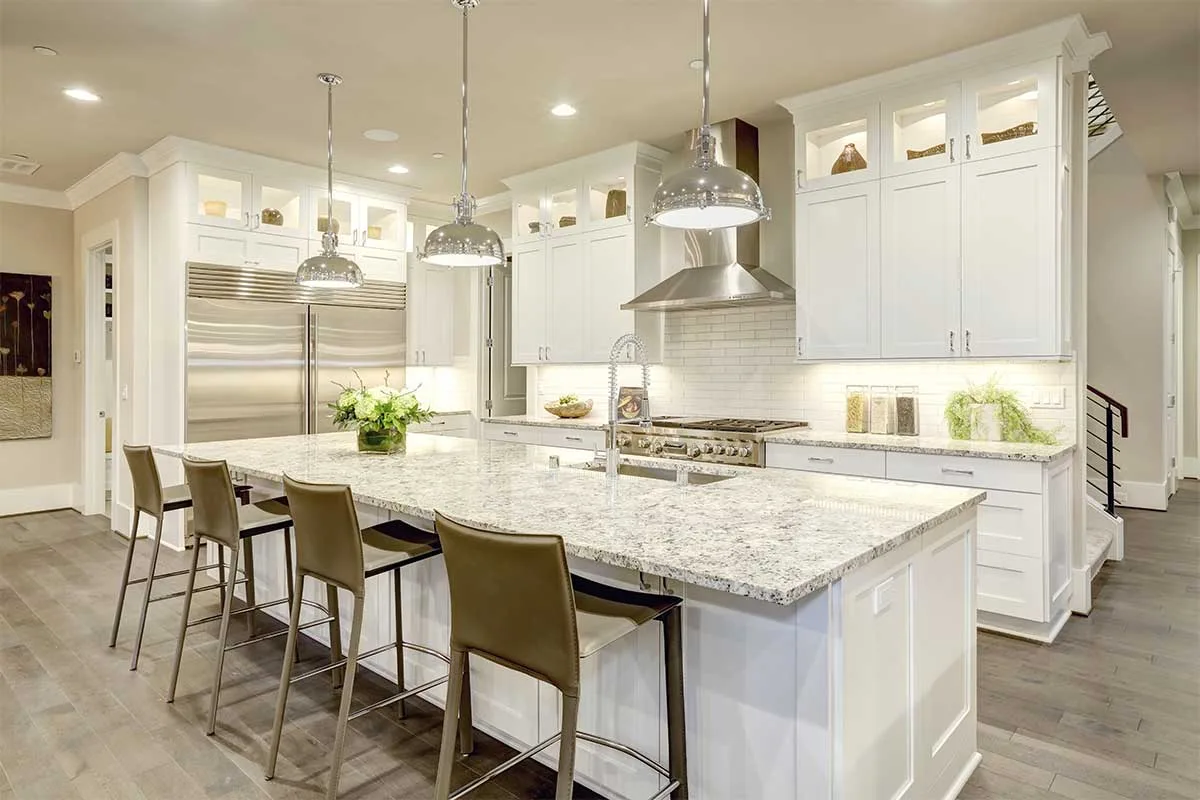
Is your kitchen a bright and welcoming space where you love to cook, dine and entertain? Or do shadows lurk in the corners, making tasks harder than they should be? If so, you’re not alone! All too often, kitchen lighting is treated as an afterthought, leading to an uninviting or impractical finished result. In reality, it should be a central part of your kitchen’s design.
At Claremont Kitchens, we can help you integrate kitchen lighting into a bespoke renovation plan. That way, you can rest assured that your new kitchen will be both practical and beautifully lit. Need some inspiration before moving forward? Read on as we outline some expert kitchen lighting design tips and popular styles to consider when making your choice.
Why lighting matters: functionality and atmosphere
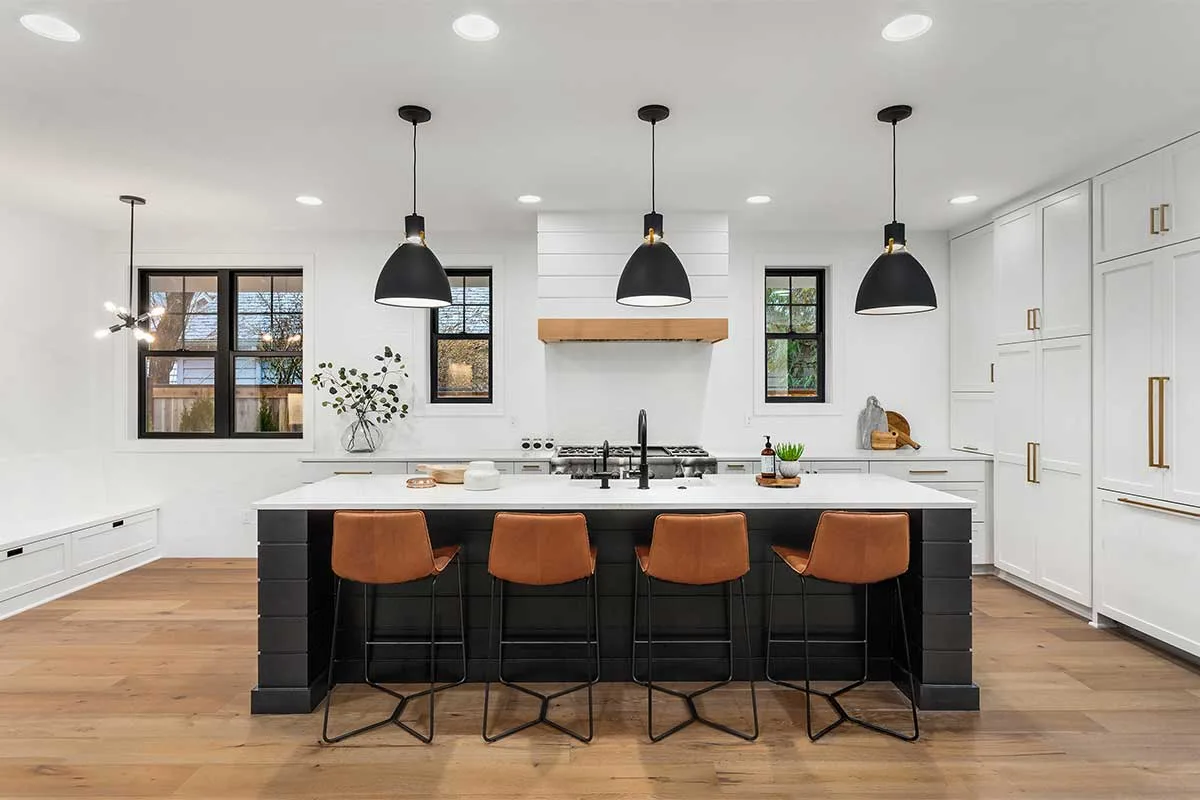
Kitchen lighting does far more than illuminate the room. It shapes how your kitchen feels and how well it works for everyday life. On a functional level, good lighting means safety and clarity. Preparing food, chopping vegetables or cleaning up after dinner all require bright, well-positioned task lighting so you can see what you’re doing.
At the same time, light plays a huge role in atmosphere. Ambient kitchen lighting creates warmth and comfort, transforming a practical kitchen into a place to gather, relax and entertain. A well-designed lighting scheme should balance these two aspects seamlessly.
The Three Layers Of Kitchen Lighting
The best kitchen lighting ideas don’t come from a single fixture. Instead, your kitchen should include three layers of light: task, ambient and accent. Together, they create depth, flexibility and set the mood – depending on the task at hand and the time of day.
1. Task lighting
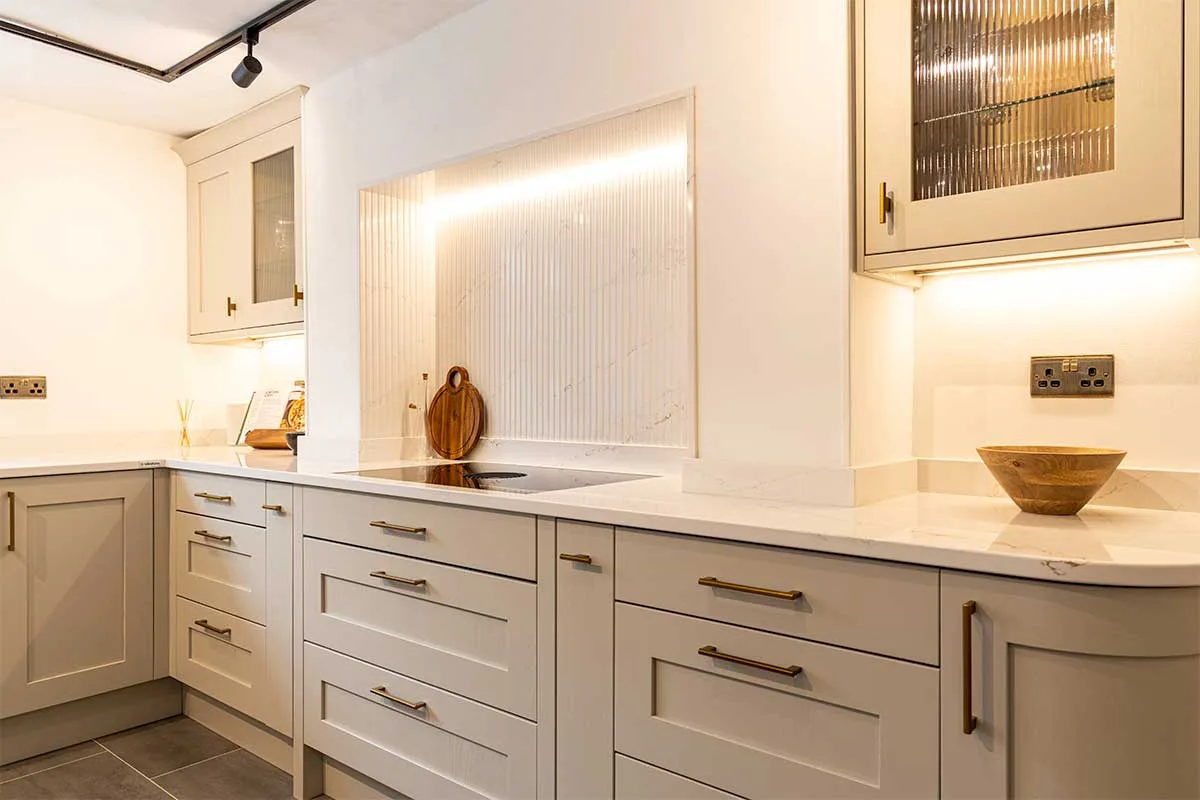
Task lighting provides bright, focused illumination for specific activities. In kitchens, this often takes the form of under cabinet lighting to brighten up worktops, or spotlights above sinks and hobs. By eliminating shadows, task lighting makes food preparation safer and more enjoyable. Recessed downlights and LED strip lights are popular as they’re powerful yet discreet.
2. Ambient lighting
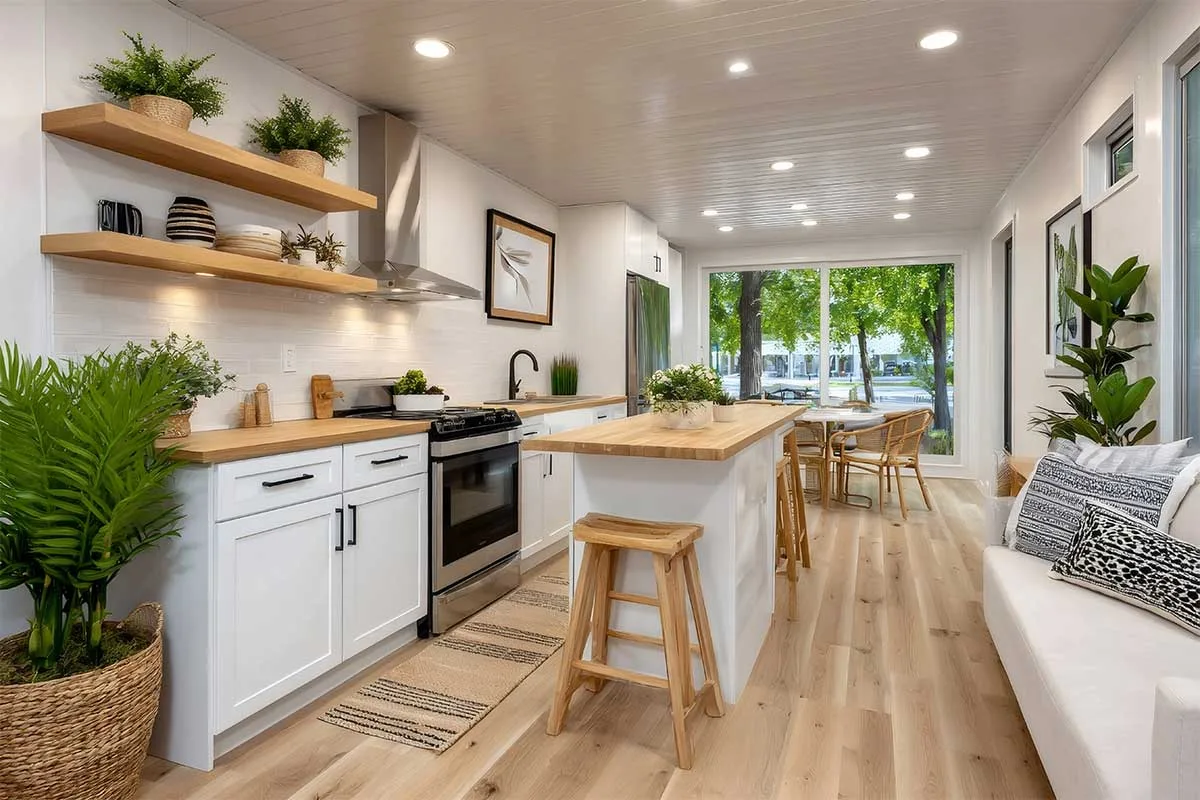
Whilst task lighting is practical, ambient kitchen lighting is all about comfort. It creates a base level of brightness across the whole room, ensuring the kitchen feels welcoming any time of day. Recessed ceiling lights or ceiling-mounted fixtures are both common. Layering ambient kitchen lighting with brighter task lights will help create the right balance for different activities.
3. Accent lighting
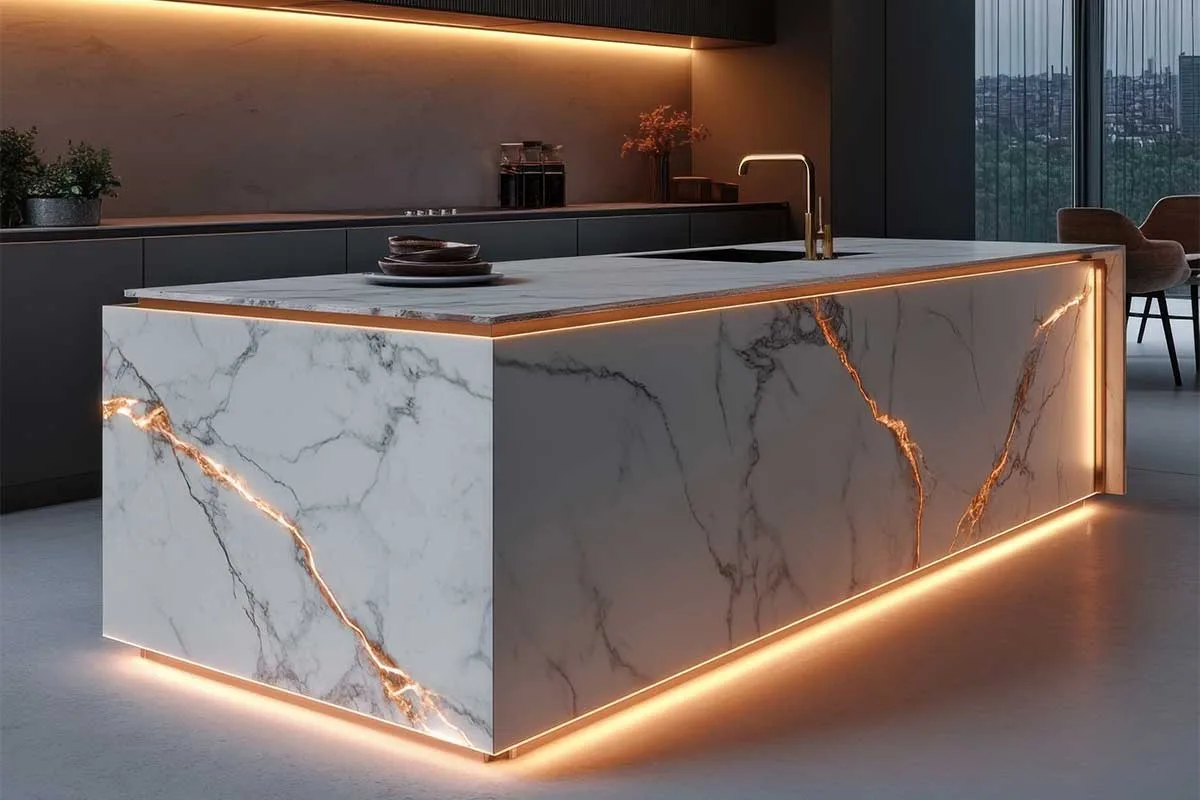
Accent lighting adds character and highlights details that make your kitchen unique. Pendant lights in the kitchen, for example, are often hung above an island to create a focal point and provide useful illumination. Plinth lighting at floor level adds a soft evening glow, while in-cabinet lighting showcases glassware or decorative displays. These touches aren’t vital for functionality, but they bring warmth and sophistication to make your kitchen feel truly bespoke.
Popular Kitchen Lighting Solutions
When planning a new kitchen, there are several lighting solutions that homeowners in West Sussex and beyond choose time and again. Each plays a different role, and the most effective schemes combine them in layers.
Pendant lights
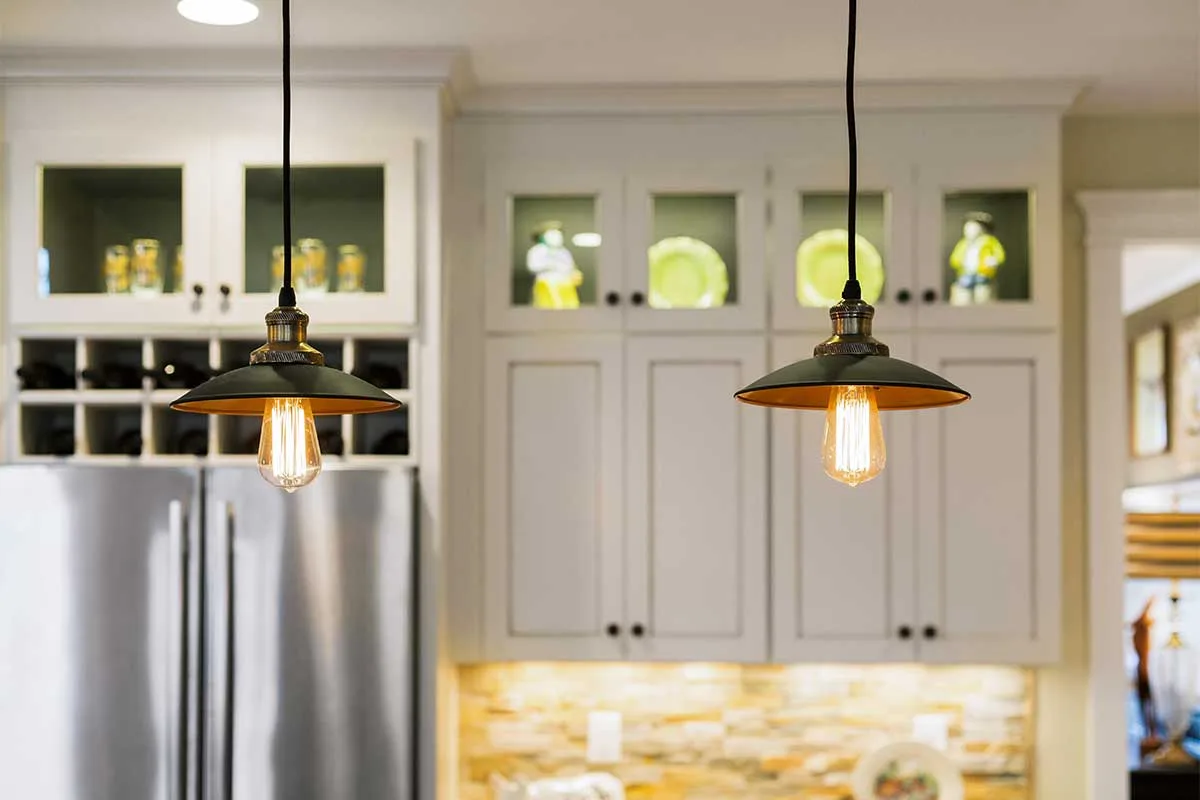
Pendants remain a stylish and versatile choice, especially over kitchen islands and dining areas. Suspended at the right height – around 70cm above a work surface or 55cm above a dining table – they create a statement while also providing useful task or accent light.
The size, shape and finish of the pendant can dramatically change the look and feel of your space. Glass shades provide a contemporary look, metallics give an industrial edge and fabric shades offer a softer feel. Clusters of smaller pendants can make a striking feature above a large island, while a single bold pendant can anchor a dining table.
Under cabinet and in-cabinet lighting
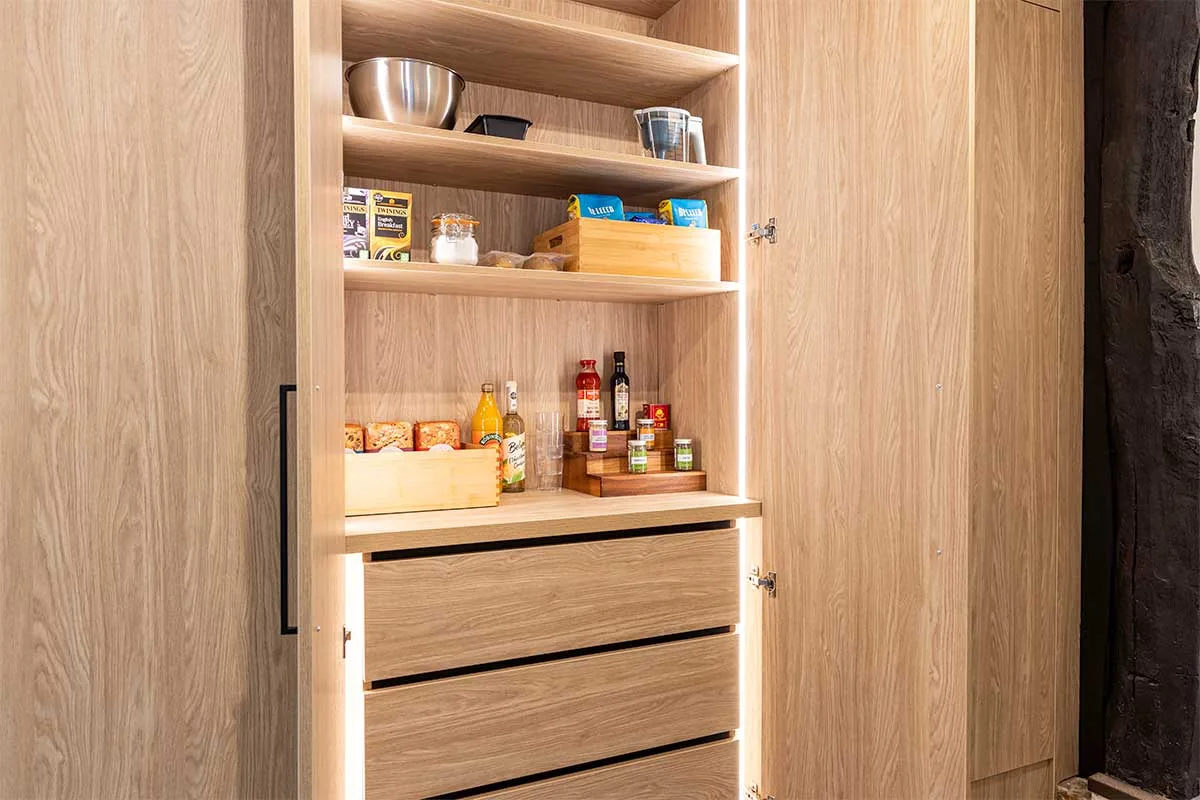
Bright under-cabinet lights – typically LED strips – ensure you can prepare food safely without any shadows blocking your view. Meanwhile, in-cabinet lighting transforms cupboards into display areas, bringing a subtle glow to glass-fronted units or open shelving. It’s a simple way to add a touch of luxury and highlight your favourite glassware or ceramics.
Recessed downlights
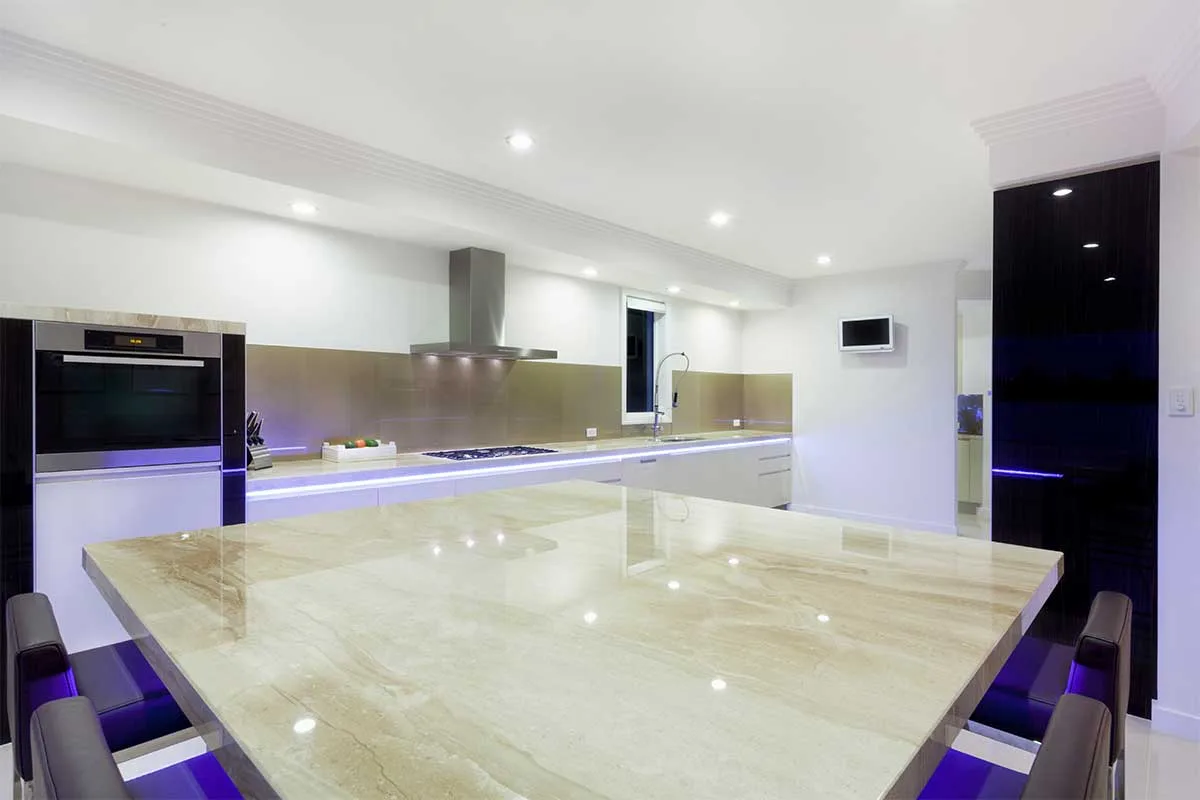
For overall brightness, recessed downlights provide clean, unobtrusive illumination. They can be positioned in grids across the ceiling for even coverage, or arranged to highlight specific areas such as a sink, hob or breakfast bar. You can even get dimmable downlights that you can adapt for different times of day – bright for cooking, then softer for entertaining.
Plinth lighting
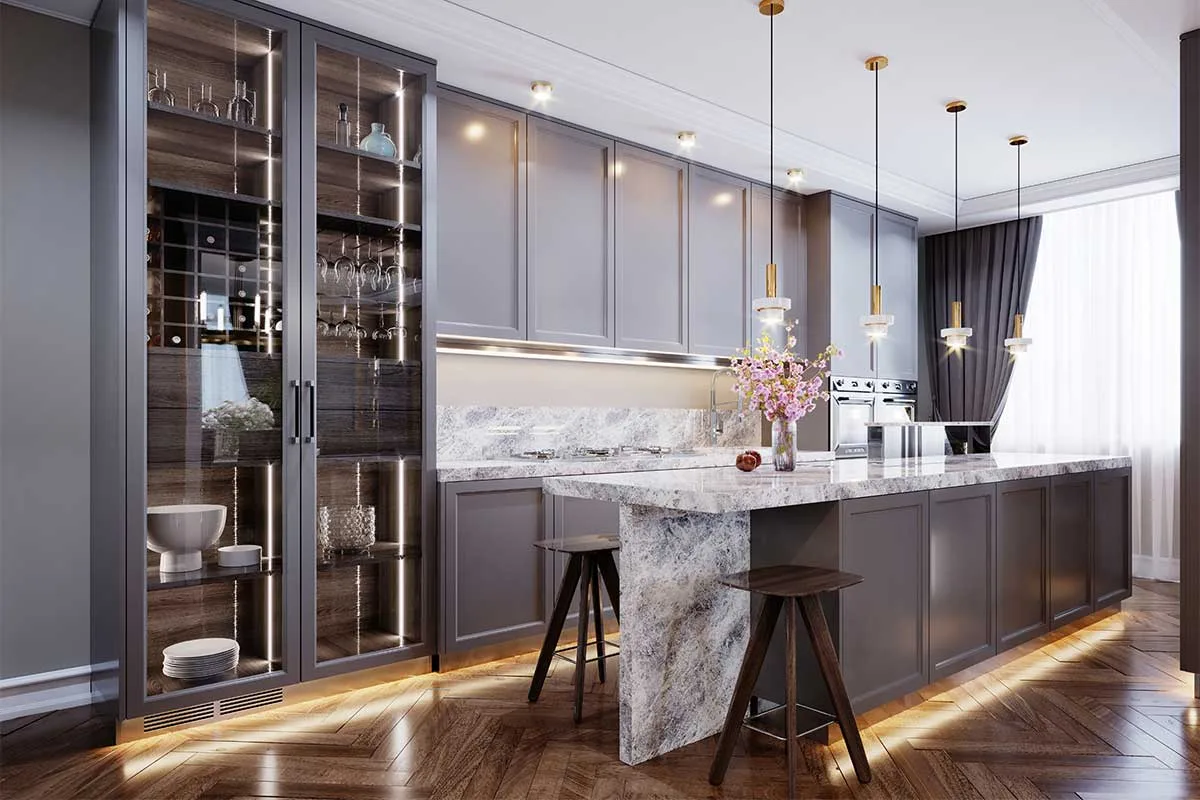
Have you considered lights at floor level? Plinth lighting offers a modern touch that is both decorative and practical. Soft light along the kickboards of cabinets creates a floating effect which adds depth to the room. It’s also useful at night, guiding you safely through the kitchen without the need to switch on bright overhead lights. Just remember to pick a warm white hue!
Together, these solutions highlight why no single light source is enough. By blending decorative pendants, under-cabinet strips, recessed downlights and plinth lighting, you can create a layered scheme that is adaptable, practical and aesthetically pleasing.
Choosing the right light colour and brightness
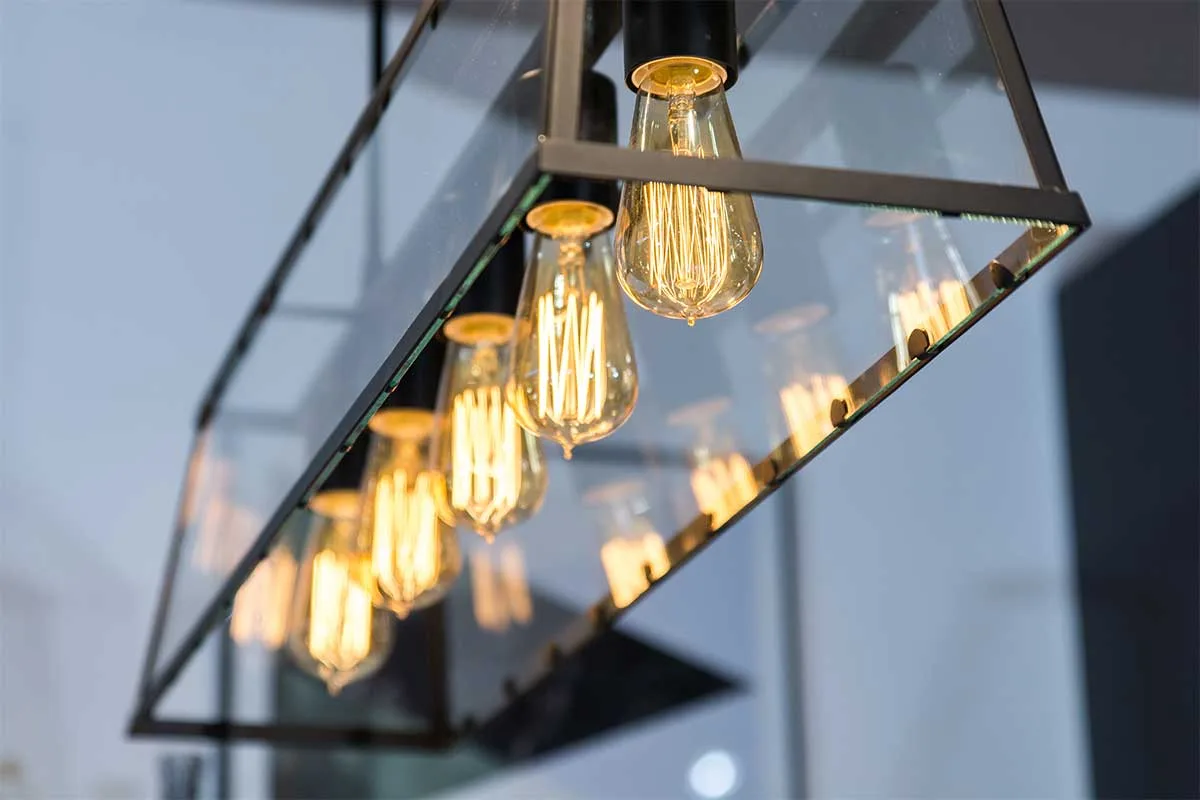
Light quality matters just as much as the type of fixture you choose. Two kitchens can have identical layouts yet feel completely different depending on the brightness and colour temperature of the lighting. As a general rule, allow around 300 lumens per square metre for general kitchen lighting. Then increase this to 500 lumens over work surfaces where you’ll be focusing on chopping, mixing or reading recipes.
The colour temperature of your bulbs also plays a big role in mood and style. Neutral to cool white light (4000–5000K) works best for task areas and complements modern kitchens best. Meanwhile, warm white light (2700–3000K) is softer and more welcoming, making it ideal for ambient and accent lighting. Imagine cosy pendant lights above a solid wood dining table or plinth lighting running underneath your custom kitchen cabinetry.
For the best kitchen lighting, opt for dimmable lights wherever possible. This will enable you to shift the mood throughout the day. Think bright and functional for mornings and food prepping, then cosier and more intimate for relaxing in the evening. By carefully mixing brightness levels and colour temperatures, you can improve both the visual appeal and usability of your kitchen.
Designing Your Lighting Scheme With Claremont Kitchens
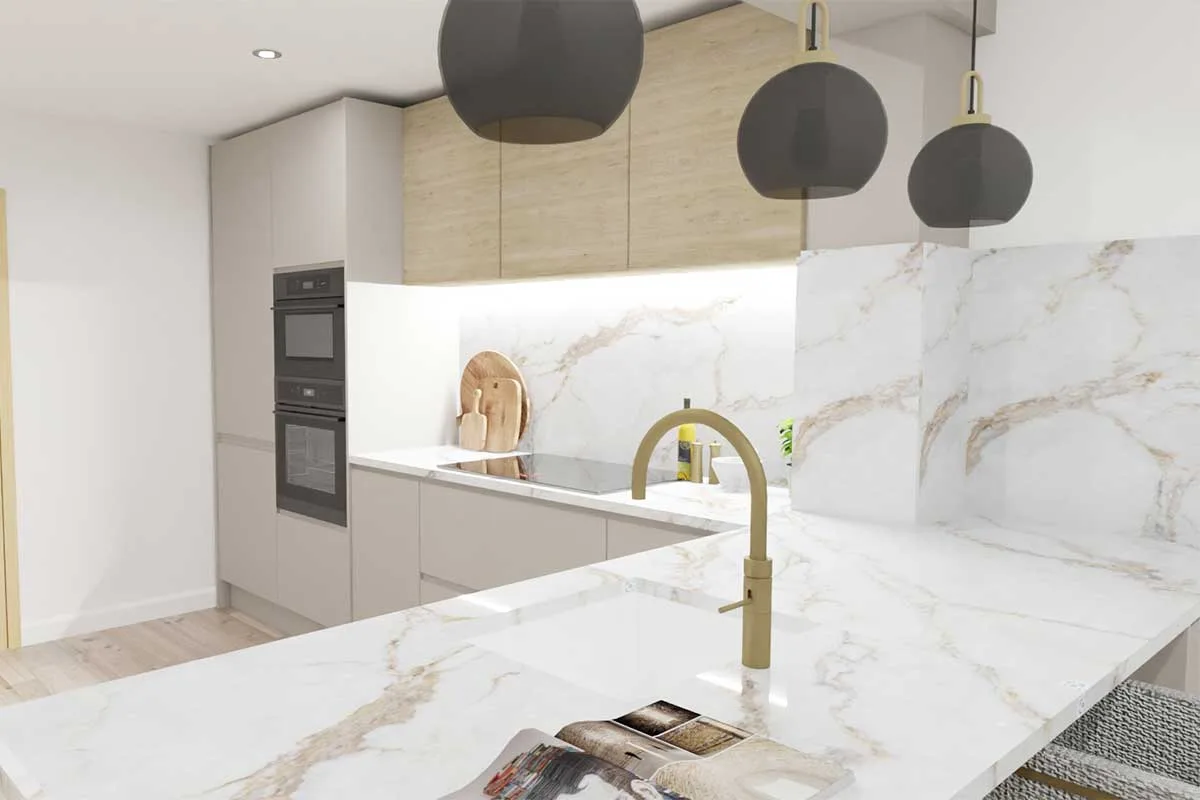
Planning a kitchen makeover or full replacement? At Claremont Kitchens, we don’t sell lighting directly, but we can help you find a style that works for you and complements your overall kitchen design. For example, a cottage might benefit from warm pendants and discreet plinth lights, while a new-build may call for sleek recessed downlights and brighter LED strip lights.
Our design process begins with a personal consultation. We’ll discuss how you use your kitchen, the atmosphere you’d like to create and the natural light your home already benefits from. From there, we’ll tailor a plan that layers task, ambient and accent lighting. We’ll advise on where to position lights to get the most out of your space. For example, to ensure worktops, sinks and hobs are well-lit, but that your lighting isn’t too close to water or grease.
We can also provide ideas on how to using lighting to create focal points around a kitchen island or dining table. Whatever your goal, we’ll cover every detail – even recommending finishes that will match your cabinet handles for cohesiveness.
Kitchen Lighting FAQs: Your Questions Answered
Here are some helpful answers to common questions about kitchen lighting and planning. If you have a specific question that we have not answered, please do get in touch
Q: Do I need to comply with building regulations for kitchen lighting in the UK?
Yes. Under UK Part P wiring regulations, kitchens are considered “special locations”. As such, any alterations or new electrical work must meet current safety standards. The best advice is, whether you are simply adding downlights or doing a full rewire, all electrical works should be carried out and certified by a qualified electrician.
Q: Are LED lights a good choice for kitchens?
Yes, LEDs are a good choice for kitchens. They are energy-efficient, available in many styles, and consume significantly less energy compared to halogen or incandescent bulbs, which are being phased out. LEDs also allow designers to use lighting more creatively, such as strip lights inside kitchen cupboards and concealed plinth lighting.
Q: What colour temperature works best for kitchen lighting?
Experts recommend a cool white light (around 4000K) for modern kitchens, this gives a clean and bright look. For traditional, farmhouse, and industrial style kitchens, choose warmer white (2700K–3000K) to compliment the style and make it feel inviting. Mixing both colour temperatures is though a good idea in any style of kitchen. Use cool white light for task areas and warm lighting for ambience and dining areas.
Q: How many downlights do I need in my kitchen?
The number of lights depends on the size of your kitchen, the ceiling height, the shape and layout the room. For this reason, correct placement is of greater importance. But a rough guide is one downlight for every 1.5–2 square metres of ceiling space. To prevent shadows from downlight, add under cabinet lights. You’ll also want under-cabinet lights to avoid shadows on worktops. Adding a dimmer switch will provide greater control of recessed downlighters.
Q: Should I choose under-cabinet lighting?
Yes. Undercabinet lighting illuminates the working areas of kitchens where good light is important. Slim LED strip lights are perfect for undercabinet task lighting. Undercounter lighting will also balance ceiling lighting which can leave countertops in shadow.
Q: Are pendant lights suitable for kitchens with low ceilings?
Yes, but choose smaller pendant lights and hang them 75-90cm above your kitchen island or table. Compact pendant lights are also a good choice for galley kitchens, where larger lights can make the space feel cramped.
Q: Can I install kitchen lighting myself, or do I need an electrician?
Changing a bulb fine, but installing new lighting circuits, downlights, rewiring electrical circuits, or similar should be carried out by a qualified electrician. All domestic electrical works in the UK must comply with Part P building regulations to ensure your safety.
Q: Do I need planning permission for kitchen lighting?
Not usually. However, it is worth noting that you may need Heritage or Conservation approval for lighting alterations and fitting styles for listed properties. Check with you local authority before starting your kitchen renovation project.
Q: What IP rating do I need for kitchen lights in the UK?
Standard lighting is fine for most areas of the kitchen. However, it is advisable to use IP44 rated lights above sinks and in wet areas. Your electrical should be able to provide advice regarding appropriate rating for your fittings.
Q: Are smart lights worth it in a kitchen?
Yes. Smart bulbs and lighting systems let you adjust brightness and colour temperature via your smart phone or voice assistant. They are great for open-plan kitchens where the kitchen doubles as a social and entertaining space, letting you switch from bright cooking light to cosy dining or party light easily.
Q: How can lighting make a small kitchen feel bigger?
To make smaller kitchens feel bigger, use layers of lighting and choose shiny finishes for cabinets and worktops. Avoid using a single ceiling light, instead use recessed downlighters paired with undercabinet lighting and concealed plinth lighting. Use a cooler tone of lighting (around 4000K) to make small spaces feel larger. And don’t forget to add dimmer switches to control the light sources and change the feel of the space for different times of the day.
Q: Should I use dimmers in my kitchen?
Yes, dimmer switches are great for kitchens. They provide an extra level of control and let you adjust brightness for cooking, dining, or entertaining. Just ensure that your your dimmer switches are LED-compatible or the bulbs can flicker.


